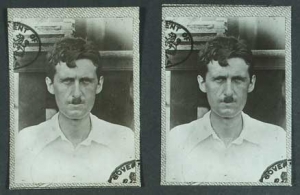Decision theorists and philosophers of language have a lot to learn from one another. In the first of this two-part series, Anna Mahtani looks at the use and interpretation of credences and preferences.
Theorists working on the philosophy of language, and theorists working on decision theory are rarely brought into contact. However, there are numerous interesting and fruitful connections between the two areas. A group of us have been meeting to discuss these connections, and explore some of the wealth of literature from both disciplines. We will be hosting a workshop on the topic 25–26 May 2017 to which all are welcome. Speakers at the workshop will include decision theorists, philosophers of language, and those working at the intersection between the two.
In this post I will introduce decision theory and outline one important connection between it and the philosophy of language.
Decision Theory
Decision theorists are interested in what people do – and what they should do – when faced with a choice. Here’s a (real-life) example. I am trying to decide whether to start taking driving lessons this year. How should I go about making this decision? Well, I can consider what would happen – what the world would be like – if I did start taking driving lessons this year, and compare this with what the world would be like if I didn’t start taking driving lessons this year. If I know how the world would unfold under each of these options, then I just need to decide which world would be preferable. This may not be easy: how should I compare a world in which I have less money (because I’ve spent it all on the lessons) but can drive, with a world in which I have more money but can’t drive?
Comparing the outcomes of my possible actions may be hard enough! But – to make things even harder – I don’t even know what the outcomes will be. How will the world unfold if I start taking driving lessons? Will I succeed in learning to drive? Or will I discover that I am lacking some basic ability and never pass my test? And how will the world unfold if I don’t start taking driving lessons?
So I need to think both about the desirability of different outcomes, and about how likely these outcomes are under the various actions open to me. Here is one (greatly simplified) attempt to model the decision problem:
| Have natural ability | Lack natural ability | |
| Take driving lessons this year | Short of money, but can drive | Short of money and still can’t drive |
| Don’t take driving lessons this year | Have money but can’t drive | Have money but can’t drive |
In the left-hand column, we have the possible actions open to me. The top row gives the different possible states of the world, and I don’t know which of these obtains. Under each possible state, we have the outcomes that would result were I to carry out each action at that state. We can then think about how likely I consider each possible state of the world, and about how desirable each outcome is.
Some decision theorists represent my attitudes towards the states and outcomes using numbers. I assign a degree of belief – or credence – to each state of the world: we can suppose that I assign 0.8 (quite a high credence) to the possibility that I have natural ability, and 0.2 (quite a low credence) to the possibility that I do not. And I assign a measure of the value – or utility – to each outcome: perhaps I assign some high value (say, 100) to being short of money but able to drive; a low value (0) to being short of money and unable to drive; and an intermediate value (40) to having money but being unable to drive.
Once we have these numbers, we may be able to calculate which action or actions are rationally permissible. On one natural way of calculating this (by working out which action “maximises expected utility”) the answer is that I should (if rational) learn to drive. But alternative decision rules might give different results. Part of the role of a decision theorist is to figure out what the decision rule is here – both to model the decisions that people actually make, and to model the decisions that they should make.
The above is a very brief and rough and ready overview of decision theory. There is much more to be said, and many other sorts of decision theory that could be discussed. But we have enough here to see many interesting connections with topics in the philosophy of language.
What are the objects of credence and preference?
It is part of the standard decision theorist’s picture that we have credences in the possible states of the world, and preferences over the possible outcomes. But what exactly are these states of the world and outcomes? We might say that they are “propositions”, or “events” – but what are these?
For example, is “John likes Mary” the same proposition as “Mary is liked by John”? More generally, if two sentences are logically equivalent, do they express the same proposition? If so, we seem to have a problem, for people – arguably even rational people – can have different credences (and preferences) in the claims expressed by two logically equivalent sentences. Thus I might be very confident that John likes Mary, but not at all sure of some convoluted claim that is logically equivalent.
We can also ask whether two sentences express the same proposition if they are metaphysically equivalent – i.e. true at all and only the same possible worlds. For example, does “George Orwell is an author” express the same proposition as “Eric Blair is an author” simply because George Orwell is Eric Blair? Here it seems even clearer that a rational person can have different credences (and preferences) in these two claims.
How should we account for this? Here there is a wealth of literature in the philosophy of language to draw upon. For philosophers of language have worked on questions such as the following: what are the objects of propositional attitudes, such as beliefs and desires? Are they sets of possible worlds? Or can they at least be modelled as such? Or are they rather structured entities, such that two logically equivalent propositions need not be identical? Are they sentence-like objects? Does it matter how the objects involved in the belief-content are designated? Is there an important difference between belief “de re” and belief “de dicto”?1 Do “guises” (or “modes of presentation”) play a role in determining a person’s propositional attitudes? The moves that philosophers of language have made in response to these questions have analogues for decision theory. This opens up a largely unexplored area for future research.
Our response to these questions makes a real difference to issues in decision theory. I have argued (in “The Ex Ante Pareto Principle”) that once we recognize that it matters how the objects involved in the credence-content are designated, we find that the ex ante pareto principle is not fully defined, and so leads to contradiction. The rough idea behind the ex ante pareto principle is this: if some action A has better prospects for everyone (or – more accurately – has prospects at least as good for everyone and better prospects for at least one person) than some alternative action B, then action A is morally superior to action B. This principle is discussed extensively by decision theorists, welfare economists and others.
I have also argued along similar lines (in “Deference, Respect and Intensionality”) that we need to refine the Reflection Principle – a principle discussed by decision theorists and formal epistemologists, according to which rational agents will always defer to their future selves. In our seminar we have also looked at the papers of other authors who work in this area, reading David Chalmers’ “Frege’s Puzzle and the Objects of Credence” and Terry Horgan’s “The Two-Envelope Paradox, Nonstandard Expected Utility, and the Intensionality of Probability”. You may also be interested in the work of one of our PhD students, Chloé de Canson, whose paper looks at the Paradox of the Two Envelopes.
Here I’ve shown one way in which philosophy of language is relevant to decision theory. In the next post I turn to two further areas where the philosophy of language can be connected with decision theory: indexicals and vagueness.
By Anna Mahtani
Anna Mahtani is an Assistant Professor in LSE’s Department of Philosophy, Logic and Scientific Method. Anna’s research interests include formal epistemology, decision theory and the philosophy of language. She is currently working on projects concerning intensional contexts, vagueness, and probabilities. A selection of her published papers are available via the LSE Library.
[1] – Pinpointing the difference between belief “de dicto” and “de re” is not straight forward, so here I will just give two scenarios that illustrate (one conception of) this distinction. Suppose first that Peter believes that someone is tall – in that he believes that there exists at least one tall person. This is a belief ‘de dicto’. We can contrast this with Jane’s belief. Jane believes that someone is tall – in that there is some particular person whom Jane believes to be tall. This is a belief ‘de re’.
Featured Image: Hanoos, via Wikimedia Commons / CC-BY-SA 3.0 (cropped from original)






I’ve enjoyed reading this — I’m now excited to study philosophy of language under Dr. Mahtani this year and decision theory in the following year!